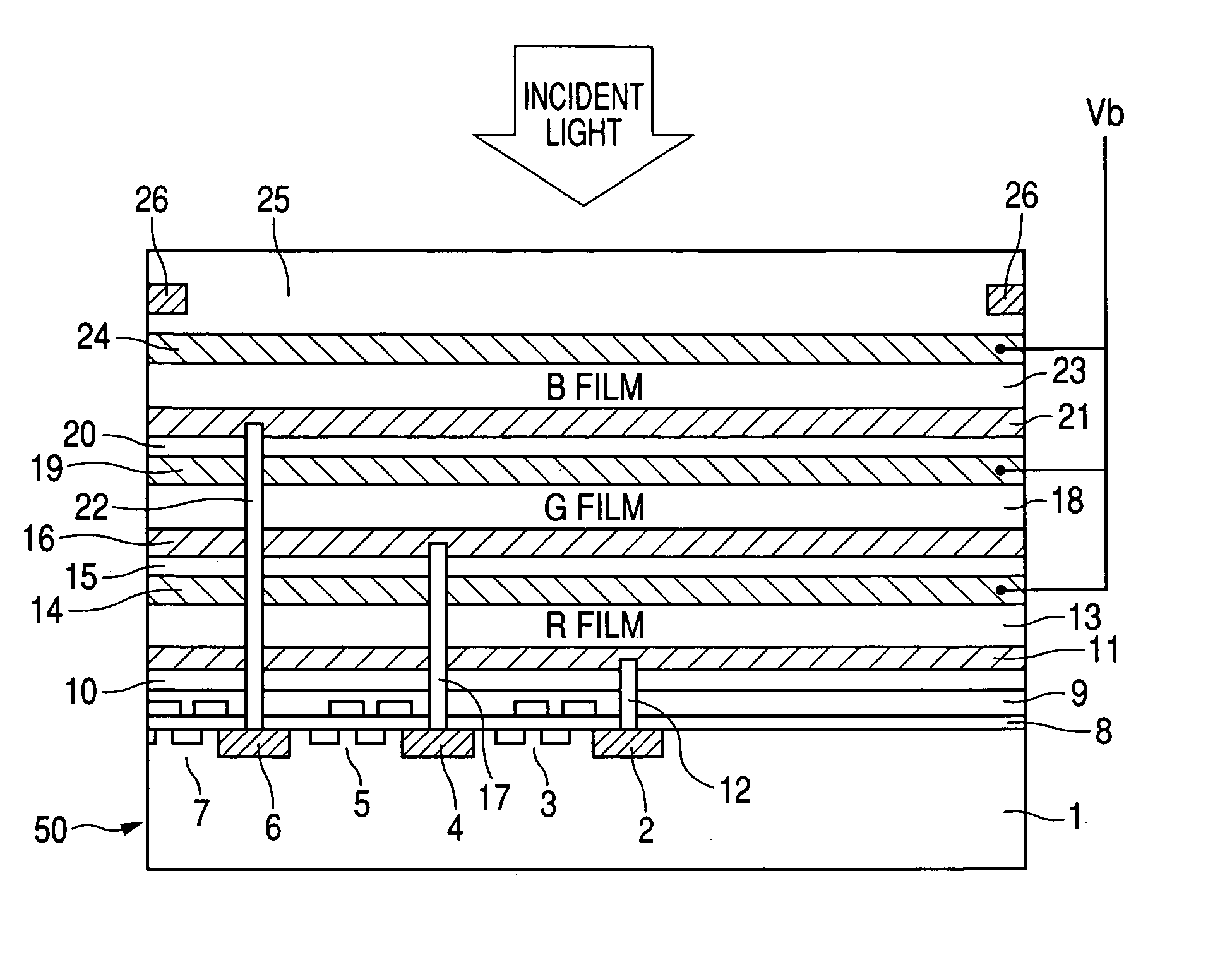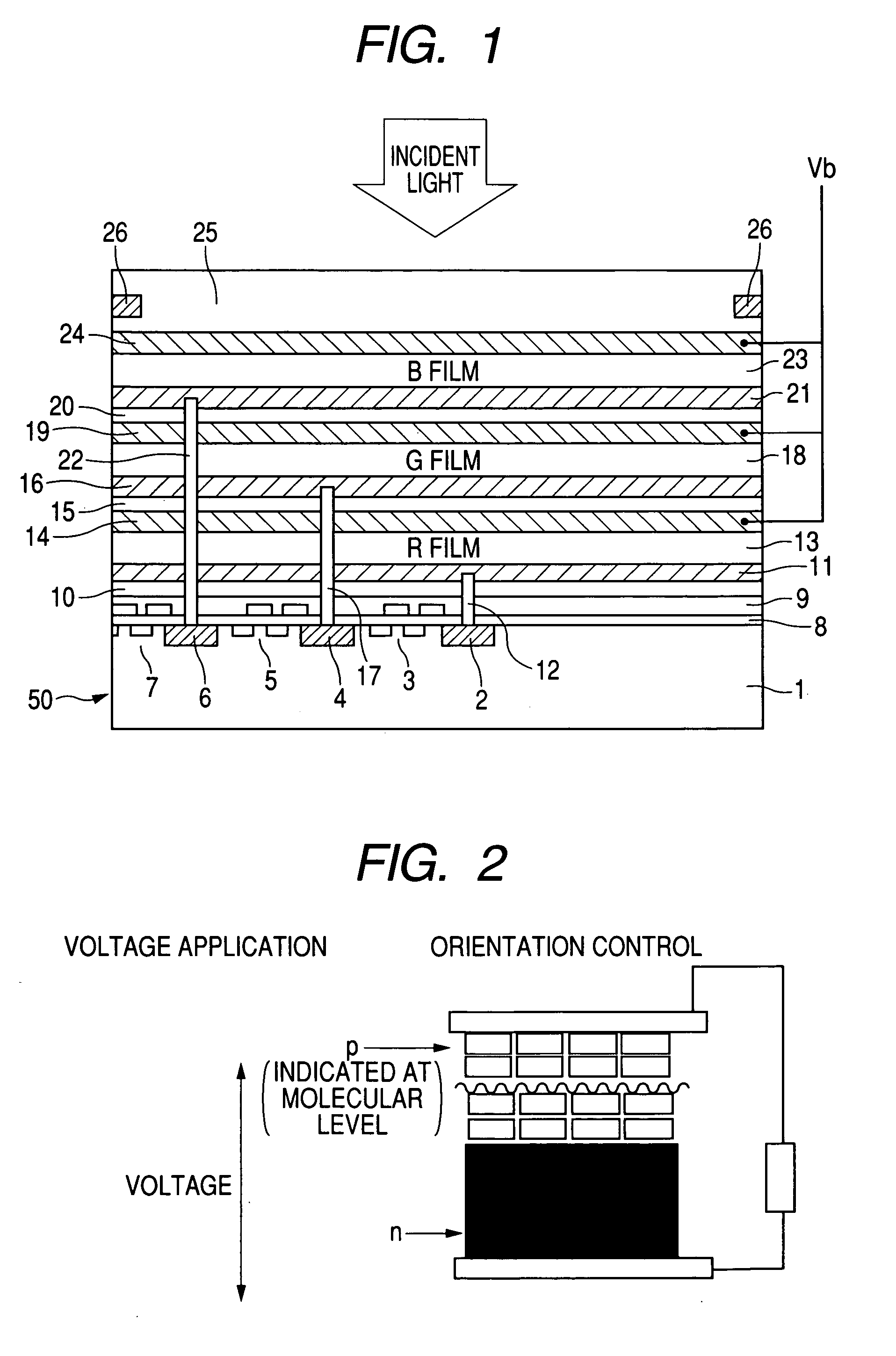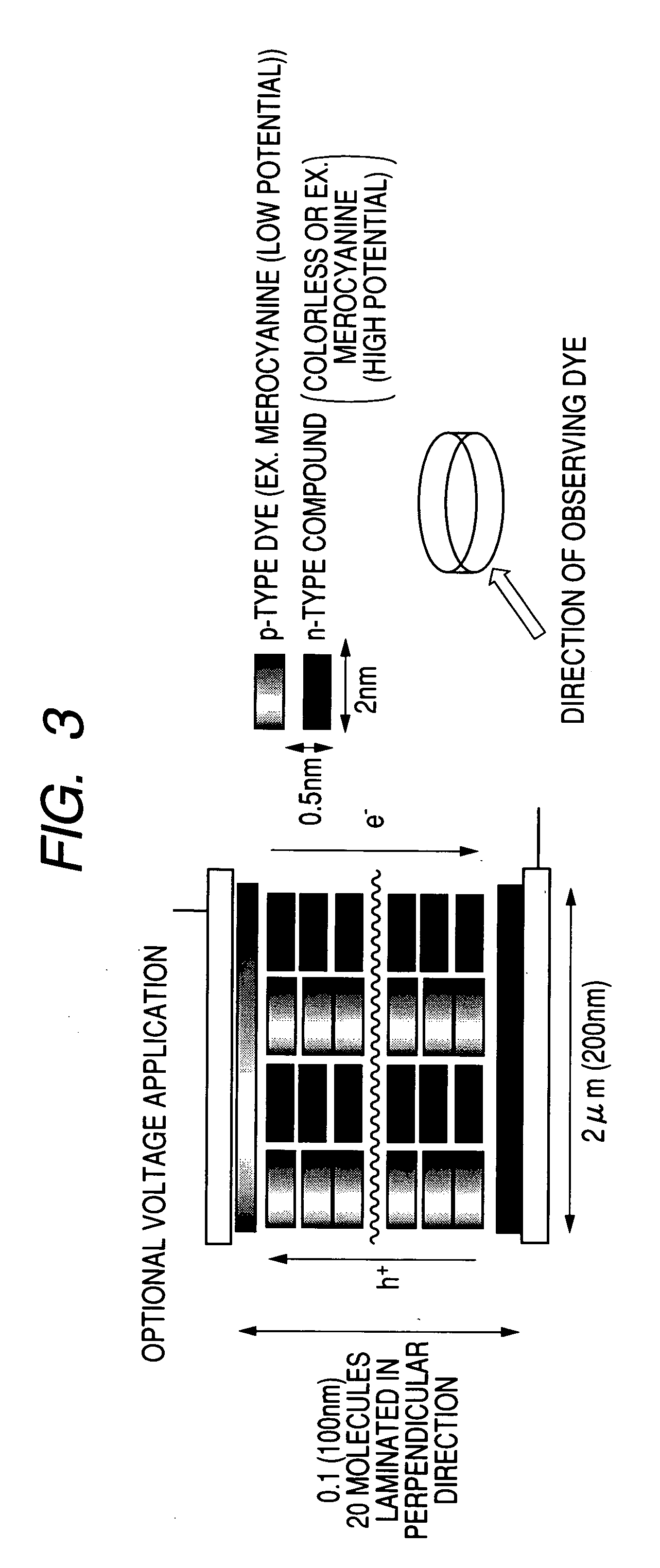Photoelectric conversion film, photoelectric conversion element, imaging element, method of applying electric field thereto and electric field-applied element
a technology of photoelectric conversion and imaging element, applied in the direction of solid-state devices, semiconductor devices, radio frequency controlled devices, etc., can solve the problems that the proposals in these documents are hardly applicable to photoconductive films, and the size and weight of such imaging devices of the three-sheet structure are unavoidable, and achieve excellent color reproduction, high photoelectric conversion efficiency, and excellent durability.
- Summary
- Abstract
- Description
- Claims
- Application Information
AI Technical Summary
Benefits of technology
Problems solved by technology
Method used
Image
Examples
example 1
[0294] On an indium tin oxide (hereinafter referred to as ITO) film, a layer (film thickness: 50 nm) of 1,3 -diphenyl-5-[(3 -(2-phenoxyethyl)-2(3H)-5-phenylbenzoxazolidene)ethyldene]ethylidene]-2-,4,6-(1H,3H,5H)-pyrimidintrione (dimethine merocyanine: Compound 1) was formed by the vacuum vapor deposition method. Next, a layer (film thickness: 50 nm) of perylene-3,4,9,10-tetracarboxyl-bis-benzimidazole (Compound 2) was formed. Further, a translucent aluminum electrode (film thickness: 40 nm) was formed to give a photoconductive film A. A photoconductive film B having a copper phthalocyanine (Compound 3) layer (film thickness: 50 nm) and a layer of (Compound 2) (film thickness: 50 nm) was employed for comparison.
[0295] By analyzing the electron diffraction image of the photoconductive film A, it was clarified that (Compound 1) has an orientation as shown in the schematic diagram (FIG. 2). Since (Compound 1) has high self-aggregation properties, such a stable structure was formed. It ...
example 2
[0299] On an indium tin oxide (hereinafter referred to as ITO) film, a layer (film thickness: 10 nm) of 1,3-diphenyl-5-[(3-(2-phenoxyethyl)-2(3H)-5-phenylbenzoxazolidene)ethyldene]ethylidene]-2-,4,6-(1H,3H,5H)-pyrimidintrione (dimethine merocyanine: Compound 1) was formed by the vacuum vapor deposition method. Next, a layer (film thickness: 80 nm) was formed by simultaneous vapor deposition of (Compound 1) with 1,3-dicyanoethyl-5-[(3-benzyl-2(3H)-5-naphth[2,3-d]oxazolylidene]ethyldene]ethylidene]-2,4,6-(1H,3H,5H)-pyrimidintrione (dimethine merocyanine: Compound 4) at a ratio of 1:1. Next, a layer of (Compound 4) (film thickness: 10 nm) was formed by vapor deposition. Further, a translucent aluminum electrode (film thickness: 40 nm) was formed to give a photoconductive film C. The photoconductive film B as described in Example 1 was employed for comparison. By analyzing the electron diffraction image of the photoconductive film C, it was clarified that the compound has an orientation...
example 3
[0303] An element, which was produced as in Example 2 but substituting the compounds employed in the imaging element of Example 2 as follows, showed excellent performance similar to Example 2 compared with the comparison element.
[0304] (Compound 1) was substituted by tetramethine merocyanine (Compound 5) having four methine chains.
[0305] (Compound 4) was substituted by tetramethine merocyanine (Compound 6) having four methine chains.
PUM
 Login to View More
Login to View More Abstract
Description
Claims
Application Information
 Login to View More
Login to View More - R&D
- Intellectual Property
- Life Sciences
- Materials
- Tech Scout
- Unparalleled Data Quality
- Higher Quality Content
- 60% Fewer Hallucinations
Browse by: Latest US Patents, China's latest patents, Technical Efficacy Thesaurus, Application Domain, Technology Topic, Popular Technical Reports.
© 2025 PatSnap. All rights reserved.Legal|Privacy policy|Modern Slavery Act Transparency Statement|Sitemap|About US| Contact US: help@patsnap.com



